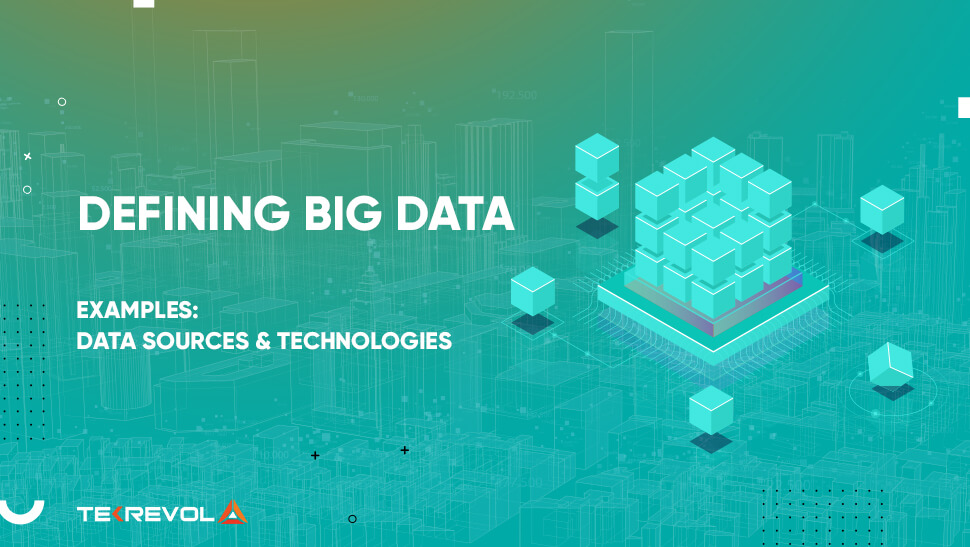New age marketing techniques and cutting-edge technology go hand in hand. With a rise in the collection of information to gain benefits, a problem emerged where there were no good tools to collect, analyze, and properly store and manage the massive database. But since technology has always been working to bring out new solutions to such problems, methods were soon devised to store and distribute these gigantic figures as clusters to different nodes.
Every once in a while, when the world experiences a halt in terms of accessibility, convenience or challenge, there comes a technology or product usually exhibited events like that solves the aforementioned aspects in the most spectacular way possible.
And this time, the rift has turned towards data, and Big Data is literally bringing new possibilities to the world of business. Let’s explore how!

What is big data?
If we consider the literal meaning of the two words then big means ‘something huge’ while data means ‘a collection of information.’ Thus, it simply means ‘a huge collection of information.’ Now, this can be anything from logs of social media sites to the records of huge enterprises.
But when do we know that the information is too big? Is it terabytes, petabytes, or zettabytes?
First, we need to know what is parallel data. Well, in simple words, it is a communication method that transfers numerous binary digits at the same time.
The following explanation will further clear the entire concept:
“A plethora of material obtained from records and statistics containing information, which needs to be assembled, assorted, and finally transmitted as parallel data is called big data. Such details need scalability to manage tremendously growing material.”

The 3 Vs model
Gartner was an analyst who provided a model to understand this term using 3 V’s;
1) Velocity: the data is growing rapidly and is in terabytes, petabytes, or contains a lot of stuff to be stored by regular methods.
2) Volume: the material is so massive to be accommodated by conventional recording methods.
3) Variety: the information collected each day is so variable and different from each other that it forms a bulk.
These 3 Vs are quite enormous to get assessed by traditional procedures and software products. Therefore, other approaches are used to manage the database.

EXAMPLES:
The following are some examples to present a crystal clear picture of the subject:
1) From Media Analytics
According to statistics provided by Facebook, 2.5 billion pieces of content with more than 500 terabytes are swallowed by Facebook every day. Such apps are used by a great number of people in the world and advanced resources are required to handle them.
2) From Educational Analytics
Columbia University enrolls about 6,202 students each year, with 77,443 jobs posted in 2019 which is, again, a piece of massive information to handle. Monitoring every student and every employee for the number of hours they served, what assignments they were given, and how well they performed would call for an efficient analytical method.
3) From Health Analytics
Massachusetts General Hospital is operating a research program called Mass General Research Institute considered to be the largest research program in the world. It has 13,400 people working there and 100,000 patients have consented for their blood samples to be taken. For such a large number of researchers, patients, and other staff members working there would also require a large amount of data entry.
4) From Government Sector Analytics
Government sectors keep a record of every individual, their tax payments and evasions, agricultural output, generation and utilization of electricity, political decisions of people, natural calamities, and their after-effects. This immense information cannot be tracked and saved by analytics with conventional recording methods. According to statistics, the US utilized electricity of a total of 3.99 trillion-kilowatt hour in 2019, and to calculate the amount of electricity produced by every plant each day would again require special analytical methods.
5) From Economical Analytics
According to economic aspects, a single jet in a 30-minute flight generates figures of more than 10 terabytes. Multiplication of these figures with every hour in a day would obtain a flood of results that would become difficult to calculate or derive any meaningful information by conventional methods.

SOURCES OF BIG DATA:
There are two types of Big Data sources:
- Internal source generating information from within the company premises.
- External source dealing with information outside the company environment from public views.
1) Business Transactions
Data collected from different money transactions and agreements taking place due to business developments, imports, and exports like payments, bills, invoices, delivery receipts, etc. This set of figures can be collected through online and offline procedures. Vast business empires like to collect details in an orderly fashion to help them know the nooks and corners of their empire, helping them recognize their weaknesses and strengths, and to give them an insight about profits and losses.
2) Media and Web Forum
Information collected by media or the web, about hundreds of individuals, is quite enormous. The facts and figures these sites collect are not necessarily important to those firms regarding personal protection but this information gives them an idea about the users’ demands and requests. It helps them to develop effective marketing techniques and to bring out new and better features in the future.
3) Machines and Instruments
Machines also provide a reference for big data. This information is generated by machines and equipment that are used industrially on vast terms. Such machines can include sensors installed in different devices and even weblogs and registers that help companies to track user records and behaviors on various topics. This database is expected to grow with the ascending and expanding growth of the internet.
Overall view about the sources of Big Data:
Thus, we can say that database is obtained from websites, mobile applications, experiments, sensors, and other devices from the Internet of Things (IoT). Whether obtained from an external source or internal source it paves way for companies to find insight about customers’ preferences and views and derive such tactics that would help them introduce products that are much better suited to the market. Hence, both parties would be able to enjoy good communication and impeccable outcomes. It also helps them to keep logs and records to determine their profits and losses on an annual basis.

TECHNOLOGIES:
nology plays a vital role in everyday life and thus helps to manage big data. Here are some of such technologies:
1) Apache Hadoop:
It is free software that stores a database in clusters and provides them when needed. It allows the user to operate and process figures over all nodes. It uses Hadoop distributed file system as it is a storage system that chops up the details and sends it across different nodes in clusters and also maintains the high availability of the data at all times.
2) Apache Spark:
This technology also distributes and processes database in the form of clusters since it is a part of the Hadoop system. It allows programming languages to cohere as well as machine learning, data streaming, and graph processing which surpasses it from others.
3) Microsoft HDInsight:

Microsoft HDInsight is also powered by Hadoop but the storage system it uses is quite different as it utilizes Windows Azure Blob. Data availability is high at a low cost. It works on different languages and tools with simplified monitoring.
4) Sqoop:
Sqoop is another technology that conveys incremental load and database to Hadoop or Hive efficiently. It uses the YARN framework which allows the import and export of data in a parallel fashion. It provides the facility to upload data directly into Hive/HBase.
5) Data Lakes:
Data Lakes stores both structured and non-structured type of material which is available to the user whenever needed. Its storage archive is vast and helps to store huge volumes of figures in their native form. It is optimized to give high-speed output.
6) NoSQL:
NoSQL is designed to provide reliable transactions and proceedings which provide high scalability and can process both structured and semi-structured data. Although they provide a flexible schema, NoSQL may be a little restricted for all apps with an effective cost.

EXTERNAL DATA SOURCES:
External Data Source simply means a connection to external data which is either too massive to be brought into the Active Data cache or simply contains details that have remained unchanged for long periods. External data is collected and stored from the outside environment of an organization.
1) Social Media Sites
Millions of people are connected to social media sites where they share their everyday lifestyle, preferences, and statuses. This provides a perfect external environment for companies and enterprise owners to gather the required information about customers’ needs along with the taste of fashion to bring out products and policies to meet the market trend.
2) Google Search

Google is the largest search engine in the entire world. There is an abundance of information related to searches, clicks, and new trends. Google trends is a good source to collect external data about public views and trends.
3) Government Sites
The federal government of the United States of America has provided companies and enterprises with insight and material necessary for their growth. Websites like Data.gov and the U.S Census Bureau provide huge enlightenment regarding agriculture, education, population, and geographical information which help those companies to grow.

IN A NUT-SHELL:
The collection and storage of Big Data is a hefty work that requires expertise in advanced technology and sciences. Thanks to scientists and engineers who provided us with cutting-edge technology by formulating such accessible, easy, and inexpensive methods that this lengthy process of collecting and computing can now be completed through intelligent and advanced processes and frameworks.

 3863 Views
3863 Views November 11, 2020
November 11, 2020









